What is a “Noxious Weed”
The Google.com definition of “noxious” is “harmful, poisonous, or very unpleasant.” And the definition of “weed” is “a wild plant growing where it is not wanted and in competition with cultivated plant.” All plants have value. But it is understandable that some plants are harmful, poisonous, or very unpleasant. Such plants are considered noxious weeds. In many cities, such as the City of Niles, Michigan, where I live, ordinances are adopted to control noxious weeds, thereby protecting the health, safety, and welfare of residents and visitors of the City. Invasive plants are treated similar to noxious weeds, but they are different (see Michigan’s list of invasive plants.) (Please also see Michigan’s Prohibited and Restricted Weeds list.)
State of Michigan Noxious Weeds Act
In Michigan, the ability of of a local unit of government such as a county, township, village, or city to adopt an ordinance to control noxious weeds is rooted in the Noxious Weeds Act 359 of 1941 (as amended). The definition of noxious weeds is found in Section 2, which includes:
“Canada thistle (Cirsium arvense), dodders (any species of Cuscuta), mustards (charlock, black mustard, and Indian mustard, species of Brassica or Sinapis), wild carrot (Daucus carota), bindweed (Convolvulus arvensis), perennial sowthistle (Sonchus arvensis), hoary alyssum (Berteroa incana), giant hogweed (Heracleum mantegazzianum), ragweed (Ambrosia elatior l.), and poison ivy (Rhus toxicodendron), poison sumac (Toxicodendron vernix), or other plant which in the opinion of the governing body of any county, city, township, or village coming under the provisions of this act is regarded as a common nuisance.”
City of Niles, Michigan, Noxious Weed Ordinance
City of Niles, Code of Ordinances, Chapter 94 “Vegetation,” Article II “Noxious Weeds,” Section 94-31 “Definitions,” (Code 1985, § 31-13) states (in-part) that in this ordinance “noxious weeds” includes:
Canada thistle (Circium arvense) or other thistle, dodders (any species of Cuscuta), mustards (charlock, black mustard and Indian mustard, species of Brassica or Sinapis), wild carrot (Daucus carota), bindweed (Convolvulus arvensis), perennial sowthistle (Sonchus arvensis), hoary alyssum (Berteroa incana), ragweed (Ambrosia elatior) and poison ivy (rhus toxicodendron), poison sumac (toxicodendron vernis), pigweed, duckweed and milkweed.”
State of Michigan Act 358 of 2010 extended the definition of “noxious weed” to include giant hogweed (Heracleum mantegazzianum), which the City of Niles has not added. The act also corrected the spelling of the scientific names of certain noxious weeds.
A comparison of the State of Michigan list of noxious weeds and the City of Niles list shows that the governing body of the City of Niles (the City Council), using their authority granted in the Noxious Weeds Act, added “or other thistle” as well as “pigweed, duckweed and milkweed.” These four local additions to the list of noxious weeds are outlined below, followed by an outline of State of Michigan selected noxious weeds.
Local Noxious Weeds
Beyond the State of Michigan list of noxious weeds the City of Niles added the following groups of plants (species not specified):

(1) Other thistles (species not specified)
“Other thistles” (thistles other than Canada thistle and perennial sowthistle) include approximately 1,275 species from 14 genera in the Asteraceae family, including Artichoke and other useful plants.

(2) Milkweed (species not specified – an example is Common milkweed – Asclepias syriaca)
Old Farmer’s Almanac – Common Milkweed: Uses and Natural Remedies:
“The leaves of all milkweed species are the ONLY food that the caterpillars of American Monarch butterflies can eat! Due to widespread pesticide use, wild-growing milkweeds are disappearing in places where these butterflies breed. This has led to a 90% decline in the number of Eastern Monarchs in a just single decade.”

(3) Duckweed (species not specified)
Bioponica – Growing Duckweed: “Growing duckweed has numerous benefits whether used as a feed for livestock, biofuel for ethanol production or even as a food for human nutrition.”

(4) Pigweed (species not specified)
State of Michigan Noxious Weeds List
(Reference note: See the Michigan State-listed Noxious Weeds page at the USDA Plants Database website)
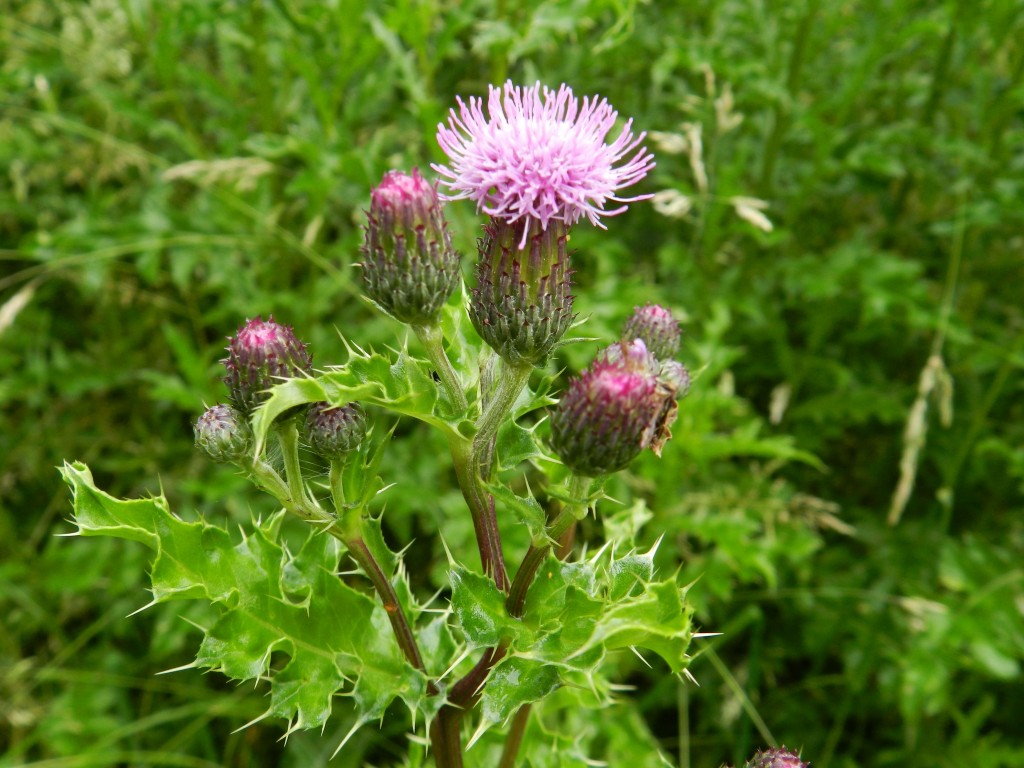
(1) Canada thistle (Cirsium arvense)
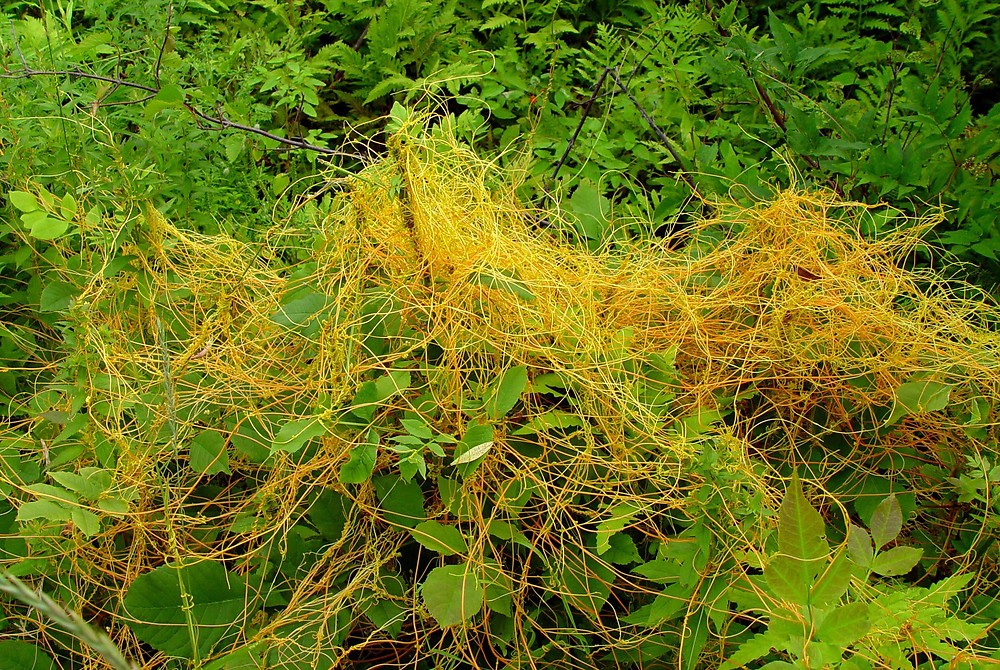
(2) Dodders (any species of Cuscuta)
(3) Mustards

(a) Charlock (a.k.a. wild mustard, field mustard) (Sinapis arvensis)

(b) Sinapis (Sinapis arvensis was listed earlier, so apparently this entry means to add Sinapis alba – white mustard/yellow mustard, plus others)
Michigan is the only state listing Sinapis as noxious weeds.
(c) Black mustard (Brassica nigra)

(d) Brown mustard (a.k.a. Indian mustard, Chinese mustard, Oriental mustard) (Brassica juncea)
(e) Brassica
The Brassica genus in the mustard family (which includes cruciferous vegetables) includes well over a dozen species, such as: Brassica juncea (brown mustard) and Brassica nigra (black mustard) – both listed above, as well as rapeseed, canola, rutabaga, kale, cabbage, collard greens, broccoli, cauliflower, Brussels sprouts, Chinese cabbage, turnips, and many others. Michigan State University (perhaps unfamiliar with the State of Michigan’s 1941 selection of noxious weeds) recommends utilizing mustard as a cover crop (Brassicas), which may reduce soil borne pathogens in the soil. Michigan is the only state listing Brassicas as noxious weeds.
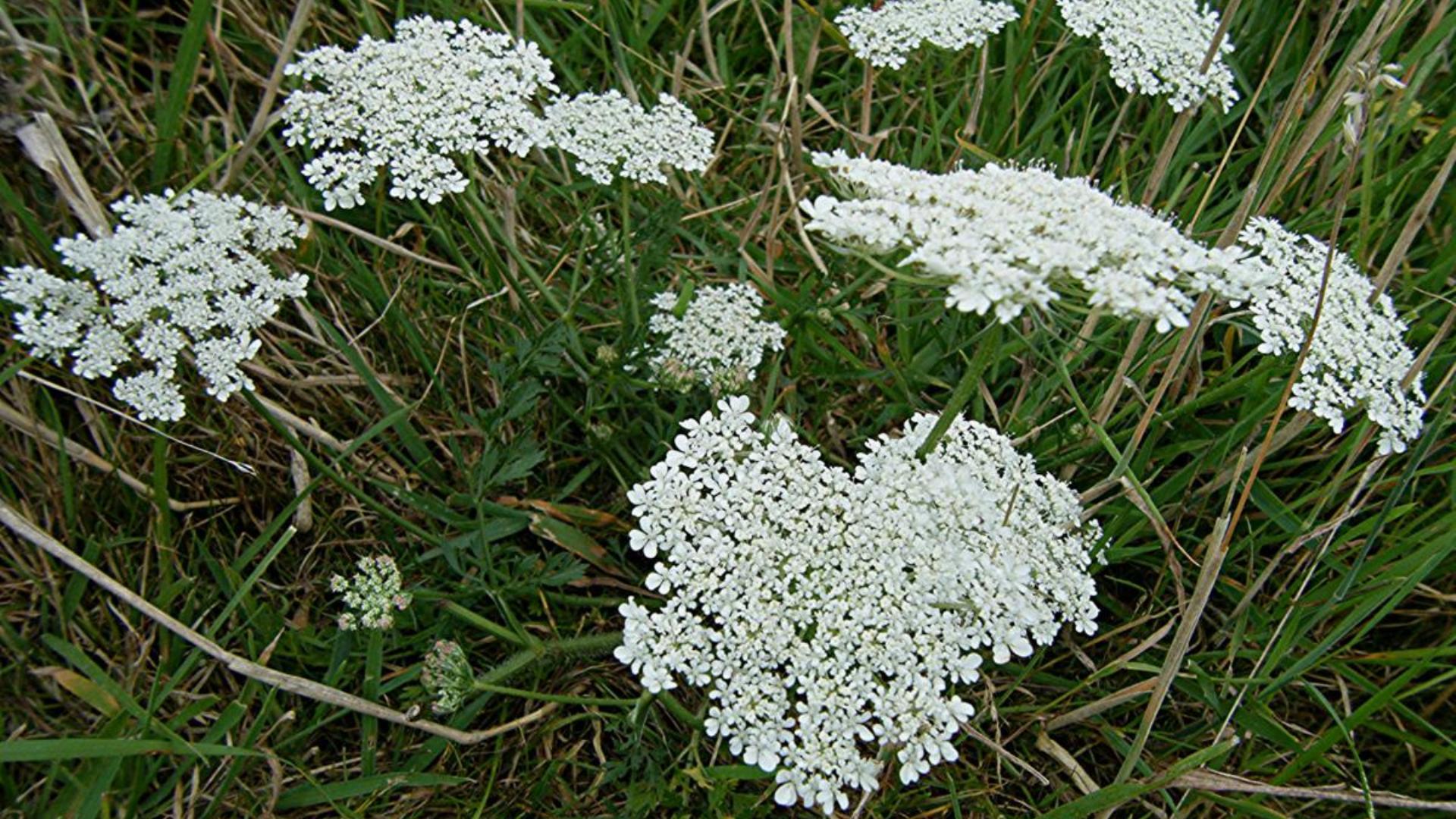
(4) Wild carrot (a.k.a. Queen Anne’s Lace) (Daucus carota)

(5) Bindweed (a.k.a. Morning Glory) (Convolvulus arvensis)
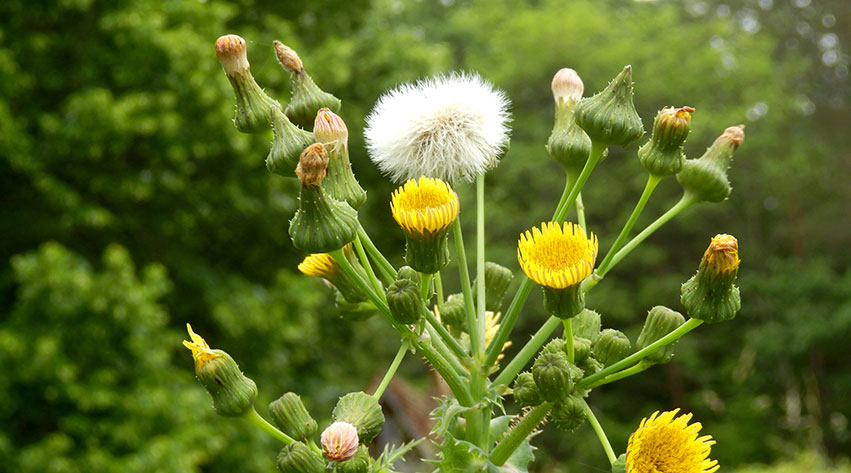
(6) Perennial sowthistle (Sonchus arvensis)
USDA Perennial Sowthistle Invasive Plant: “Perennial sowthistle can form dense monospecific stands by the spread of its rhizome-like roots. At high densities perennial sowthistle can drastically reduce water resources and likely decreases native plant diversity. It may also modify or retard the successional establishment of native species (Butterfield et al. 1996). It is also a host to a number of plant pests and a problem in several crops where it causes economic losses due to reduced crop yields, increased cultivation and herbicide expenses, and land depreciation.

(7) Hoary alyssum (Berteroa incana)
USDA Hoary Alyssum Plant Fact Sheet: “Contamination of 30% or more of forage with hoary alyssum is toxic to horses.”
(8) Giant hogweed (Heracleum mantegazzianum) (Note: Added to the list in 2010.)

(9) Ragweed (Ambrosia elatior l.)
Medicalnewstoday.com – Ragweed Allergy:
“Ragweed plants are a common allergen. When a person breathes in ragweed pollen, their immune system may react as if it is an illness-causing substance, and they may experience allergy symptoms. There are 17 types of ragweed that grow in the United States, typically releasing pollen between August and September.”
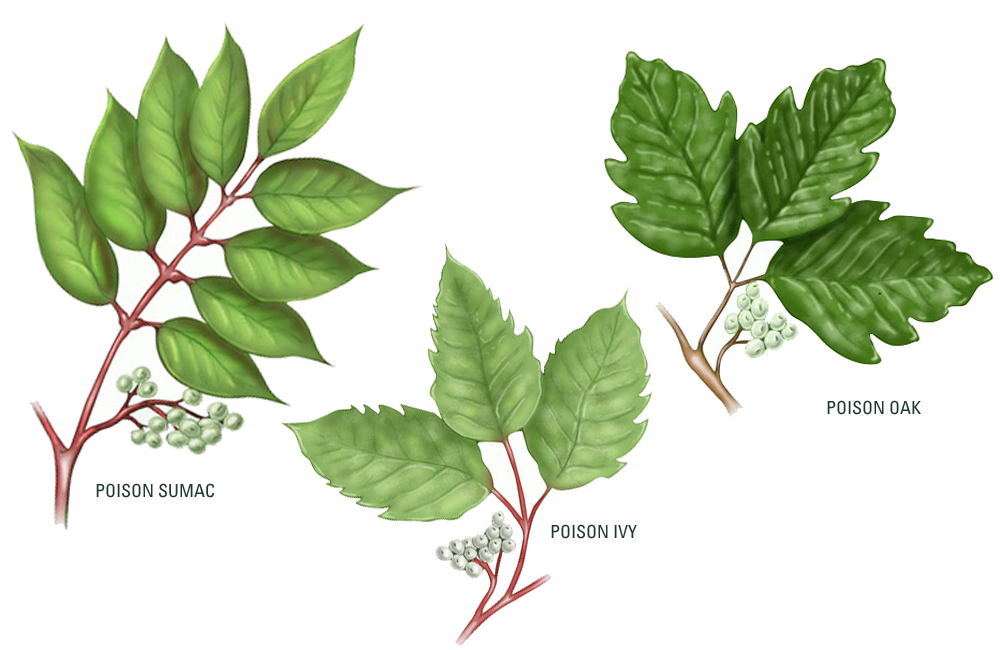
(10) Poison ivy (Rhus toxicodendron)
(11) Poison sumac (Toxicodendron vernix)
(Note: The range of poison oak does not include Michigan.)

